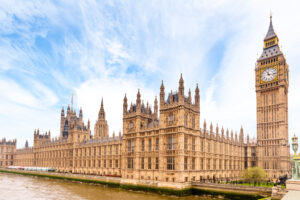A possible contender for the Collins Dictionary’s Word of the Year 2022 competition, but ungifting seems to adequately sum up the Chancellor’s Spring Statement earlier today – on the one hand staying silent on the planned 1.25% National Insurance Contributions increase as a result of the Health & Social Care Levy being introduced from April this year, whilst on the other hand announcing a crowd-pleasing planned 1% decrease in the basic rate of income tax, effective from April 2024 (though not in Scotland!).
Whilst some of the shorter-term measures – in particular the one-year reduction of 5p per litre in fuel duty – may take the sting out of the recent explosion in the cost of living, the longer-term measures will inevitably take time to play out. We’ll know more in Autumn, but the Chancellor’s focus on the three priority areas of Capital, People and Ideas seems to make sense with an overall objective of boosting our productivity and ultimately the UK’s GDP.
In fairness, there was some more immediate relief from the Health & Social Care Levy, in the form of an increase in the threshold at which National Insurance is payable. The government claim is that 70% of people will overall pay less NI as a result of the two changes. While the persistence of the NI increase is disappointing, the corresponding increase in the lower level contribution threshold to match the income tax personal allowance will help millions of families in the UK, with those earning up to around £40,000 seeing a net benefit from the changes. The income tax rate drop was loosely tied to a return to a stable economy in 2024, so don’t be too surprised if this fails to materialise should thing not reach that even keel. The Chancellor’s tax plan suggests that the cost of this, which runs to over £5bn per year, will be offset by ‘reforming’ some tax reliefs and allowances, although detail on this is currently scant.
Unfortunately, this relief does not extend to employers, whose payroll costs will increase by 1.25% of all salaries over £9,100 at a time when they are already struggling with labour shortages and wage inflation, raw material price inflation and the escalating cost of energy. David Cameron and George Osborne campaigned for government in 2010 to prevent what they called at the time “Labour’s Jobs Tax”. How ironic it is that their successors have not just failed to abolish it but have significantly increased it.
From an economic efficiency perspective, one must wonder when governments will cease heavily taxing inputs such as property use (via business rates) and labour, since doing so merely benefits those businesses which use relatively cheap premises with little UK labour, such as Amazon, or who use no UK labour at all, such as Chinese manufacturers whose goods are competitive partly because they have far lower unit labour costs.
On a more positive note, the Chancellor did announce a “Tax Plan” to set out the future direction of tax policy. This contained three priorities, which were to alleviate the cost of living crisis, to support business investment and to share the benefits of economic growth. The business investment aspect of this appears to herald the latest attempt to address the UK’s chronic lack of productivity as compared to our international peers. The average French worker produces 16% more than the average Brit and that gap needs to be closed if the UK is to improve living standards. This gap is explained by lack of investment and lack of R&D- UK businesses spend an amount equal to 1.25% of GDP on R&D versus 2.5% in Germany, whilst business investment is only around 70% of the OECD average. Our Heads of Property Taxes and Innovation Reliefs, Russell Bennett and Caroline Walton, will be keeping an eagle eye on the mooted reforms to the Capital Allowance and R&D Tax Relief regimes, both of which look set for further positive reform in order to boost productivity. We look forward to hearing more from them in due course.
Also hidden in the detail of the announcement was a significant additional spend on HMRC compliance activity, targeted in particular on large and medium sized businesses, which is projected to raise £3 billion in extra tax over a 5 year period. Also, under the badge of simplification and fairness, a review will be undertaken of tax reliefs and allowances, the implication being that some of these may be abolished.
Finally, it’s worth mentioning one feared change that did not come. As a firm, we were not expecting any changes to the capital gains tax regime but we were aware that a number of people were concerned about it. Fortunately, the 20% capital gains tax rate and the £1m Business Asset Disposal Relief limit remain intact for now, although this could be one of the reliefs that is ‘reformed’ to pay for the income tax cut in 2024. Nevertheless, if, as Rishi said, tax cuts are now to be on the agenda, we may be able to escape the annual round of worry about capital gains tax rates, with the unnatural pressure it exerts on business sellers to act more quickly than they would otherwise like.
Roll-on the Autumn Statement!




